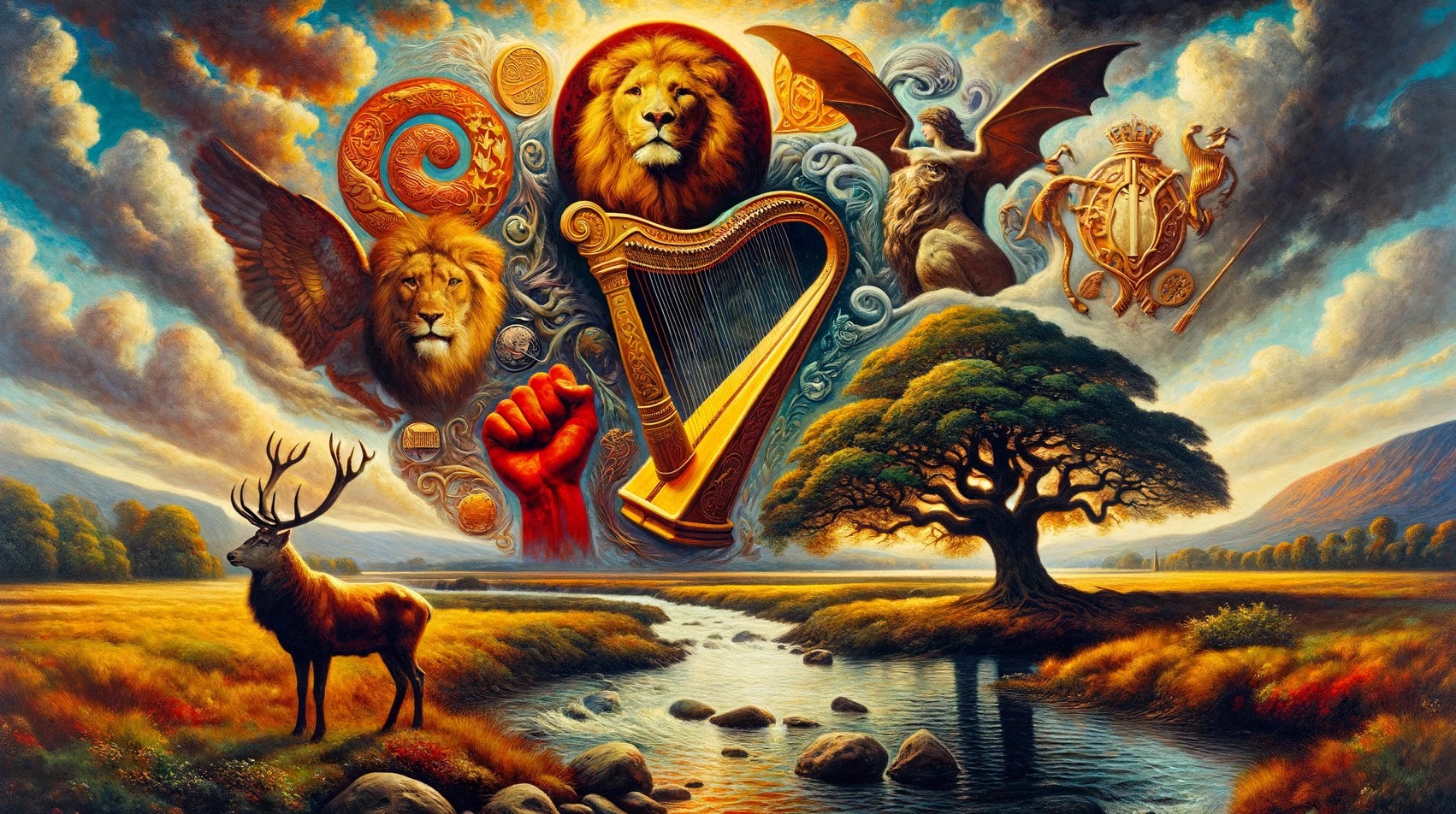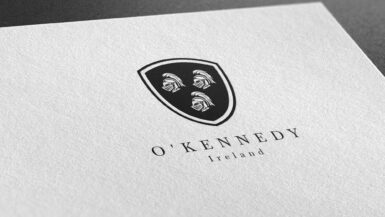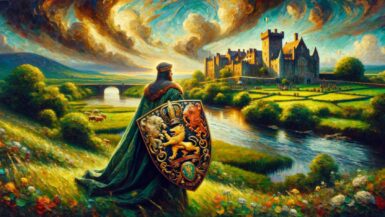Irish coats of arms and family crests are rich with history and symbolism, reflecting the cultural, familial, and historical narratives of Ireland. These emblems, used throughout centuries, serve as more than just decorative heraldic designs; they connect families to their ancestral pasts and communicate their values, achievements, and statuses. This article delves into the significance of these symbols and their meanings, offering insight into the fascinating world of Irish heraldry.
Origins of Irish Heraldry
Heraldry in Ireland can be traced back to medieval times, emerging as a means for knights and nobles to identify themselves in battle and in tournaments. Over time, these symbols became hereditary, representing not only individuals but entire family lineages. Irish heraldry is unique, featuring elements that highlight Ireland’s cultural and mythological heritage.
Common Symbols and Their Meanings
- The Harp: Widely recognized as the national symbol of Ireland, the harp denotes the immortality of the soul and reflects the rich tradition of Irish music and storytelling. It appears on the coat of arms of Ireland itself, symbolizing the state and its governance.
- The Lion: Often found in many coats of arms across different cultures, the lion in Irish heraldry signifies courage, strength, and nobility. It may also relate to the legendary Celtic King of Spain, Milesius, known for his lion-emblazoned shield.
- The Red Hand of Ulster: One of the most iconic and peculiar symbols in Irish heraldry, the Red Hand of Ulster represents the Uí Néill dynasty. It has various legendary origins, including tales of warriors cutting off their own hands to claim land.
- The Stag: Frequently appearing in the arms of families from Munster, the stag is a Celtic symbol of endurance and the regal nature of the family. The mythology of the stag includes narratives where the legitimacy of rulership was confirmed through the hunting of a mystical stag.
- The Oak Tree: Emblematic of the old Druidic practices in Ireland, the oak tree stands for strength, endurance, and generational legacy. It is commonly seen in the arms of families from Connacht.
- The Salmon: The fish, particularly the salmon, is a symbol of wisdom and knowledge, harkening back to the Irish myth of the Salmon of Knowledge, which granted wisdom to whoever ate it.
Color Significance in Irish Heraldry
Colors (or “tinctures”) in heraldry are not merely aesthetic; they carry deep meanings:
- Gold (Or): Generosity and elevation of the mind.
- Silver (Argent): Peace and sincerity.
- Green (Vert): Hope, joy, and loyalty in love, often symbolizing Irish identity.
- Blue (Azure): Truth and loyalty.
- Red (Gules): Warrior or martyr; signifies military strength and magnanimity.
- Black (Sable): Constancy or grief.
Heraldic Animals
Animals play significant roles in conveying the character and values of the family:
- Boars and Wolves: Symbolize bravery and perseverance.
- Eagles and Hawks: Indicate martial strength, keen insight, and nobility.
- Dogs and Hounds: Denote loyalty and fidelity.
The Role of Heraldry Today
While the use of coats of arms and family crests in Ireland has historical roots, these symbols still play a part in modern identity. They connect individuals and families to their heritage, serving as a link to Ireland’s rich historical tapestry. Today, these symbols can be seen in various official capacities, in family gatherings, and in cultural celebrations, retaining their significance and revered status through generations.
In conclusion, the study of Irish coats of arms and family crests reveals a fascinating intersection of history, genealogy, and symbolism. Each element within a crest or coat of arms holds deep significance, echoing the ancestral voices of Ireland’s storied past. As emblems of identity and pride, they continue to adorn ceremonies and cultural events, preserving a rich heritage that has been passed down through centuries.






I would like to know more about a Sir Alexander William King, He is buried in Roscommon Cathedral, I have a family crest whch depicts a Rampant lion holding a escallop shell. it also has the motto: Spes tutissima Coelis.